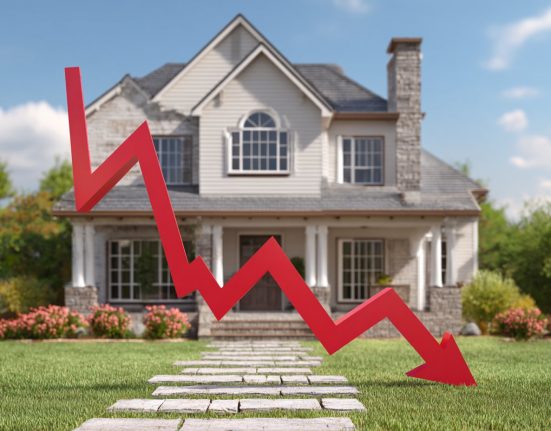The gig economy is fundamentally transforming the value of property across America—residential and commercial. Keep these major changes in mind as you navigate employment, housing choices, and investments.
Years have passed since the COVID-19 pandemic shifted how we work, and this shift has proven far from temporary.
With roughly 40% of U.S. jobs now compatible with at least partial remote work, according to McKinsey research, Americans are rethinking how and where they work.
From emptying downtown offices to reshaping prices and demand in suburbs and small towns, remote work continues to impact property values on a large scale.
Pro Tip: Find the perfect remote work opportunity today. Search for part-time or work-from-home jobs, FlexJobs and apply to remote jobs all around the globe.
1. Urban value correction
Major cities like San Francisco, New York, and Boston have seen their first significant real estate value declines in years as remote workers leave expensive urban areas.
Once seen as safe investments, luxury condos experienced double-digit price drops, with Manhattan’s median sales price plummeting 17.5% during the mass exodus. Long-term urban homeowners, accustomed to steady appreciation, faced a shock in equity erosion.
Although some markets have slightly stabilized, investors must now rethink urban property valuation models that previously assumed constant demand growth. Analysts warn that pre-pandemic appreciation trends may not fully return.
Pro Tip: Over 80% of new investors struggle without guidance. With EchoTrade, seamlessly copy the trades of top wealth managers.
2. Suburban wealth explosion
The revaluation of suburban real estate has created substantial gains for homeowners who bought before the remote work boom. Commuter suburbs, previously appreciating at 3-4% annually, saw 15-25% jumps in many areas, adding significant unexpected equity for homeowners.
Federal Reserve data indicates this suburban wealth effect increased American household home equity by over $2.3 trillion between 2020-2022.
Early investors capitalizing on this trend by shifting to suburban rental properties reported improved cap rates, with rent growth outpacing urban markets despite higher acquisition costs.
Pro Tip: Working from home? Don’t risk high-cost home repairs in today’s market. Consider a home warranty: Example? First American covers everything from home appliances to heating and cooling. Take a second and see what policies cost and what they cover.
3. Renovation ROI revolution
The financial return on home office renovations has skyrocketed, with buyers now assigning significant premium value to dedicated workspaces.
Properties with suboptimal layouts that can’t accommodate office space now face longer days on the market and sometimes lower offers, depending on regional market conditions.
According to Remodeling Magazine’s Cost vs. Value report, home office renovations now recoup an average of 87% of their cost immediately upon resale, compared to just 52% pre-pandemic.
Pro Tip: Elevate your buying power: Get 0% intro APR for purchases and balance transfers for 15 months Plus, earn a bonus of 20,000 miles once you spend $500 on purchases within 3 months from account opening.
4. Commercial asset devaluation
Commercial office valuations have been severely hit, with metropolitan office REITs losing an average of 43% of their market value since 2020.
Vacancy rates in prime business districts remain over 25%, pushing commercial mortgage defaults to levels reminiscent of the 2008 crisis. Major institutional investors have written down commercial office assets, anticipating further devaluations.
Meanwhile, opportunistic investors are snapping up distressed properties at steep discounts. These properties may be converted into residential or mixed-use developments to prevent downtown abandonment in major markets.
Pro Tip: Diversify your portfolio with real estate and venture capital. Companies like Fundrise offer investments as small as $10.
5. Capital surge: Unprecedented flows to emerging markets
Remote work has created a financial bonanza in previously overlooked real estate markets, with property values in some “zoom towns” appreciating at three times their historical rates. Savvy investors who identified this trend early have invested in high-demand destinations like Bozeman, Montana, and Bend, Oregon.
For remote workers, the financial benefits of geographic choice can be substantial—tech workers in high-cost-of-living areas can relocate to smaller metros and buy or rent much larger homes than they could afford in hot suburban markets.
Pro Tip: Tired of sitting on a gold mine of home equity with no way to access it? A reverse mortgage can turn your home equity into tax-free cash for seniors 62+, no house sale required. Use the funds for medical bills, home repairs, or even that dream vacation—without monthly payments!
6. Connectivity premium
The financial impact of Internet infrastructure on property values has created a new economic reality in real estate markets nationwide. According to recent appraisal data, homes with high-speed fiber connections now command premiums of 3-5% over comparable properties with standard broadband.
Investors have noted that specialized REITs focused on data centers and fiber networks have outperformed the broader market over the past few years.
Pro Tip: A home equity loan is a great way to access cash for tech and smart home upgrades. Take a minute right now and see how much you can get, how fast you can get it and how little you’ll pay.
Managing the shift
As remote and hybrid work models cement themselves as permanent fixtures of American life, cities, towns, and metro areas are working to minimize the impact or maximize the boom. Several states offer bonuses or grants to remote workers who move to their area, some offering up to $10K per remote worker.
The median home price continues to rise, making it difficult for homebuyers to find housing if they don’t have the freedom to relocate to a lower-cost area.
For individual investors and institutional players alike, this unprecedented redistribution of real estate value presents significant risks and generational opportunities. It may continue to reshape the way properties are valued for decades.







